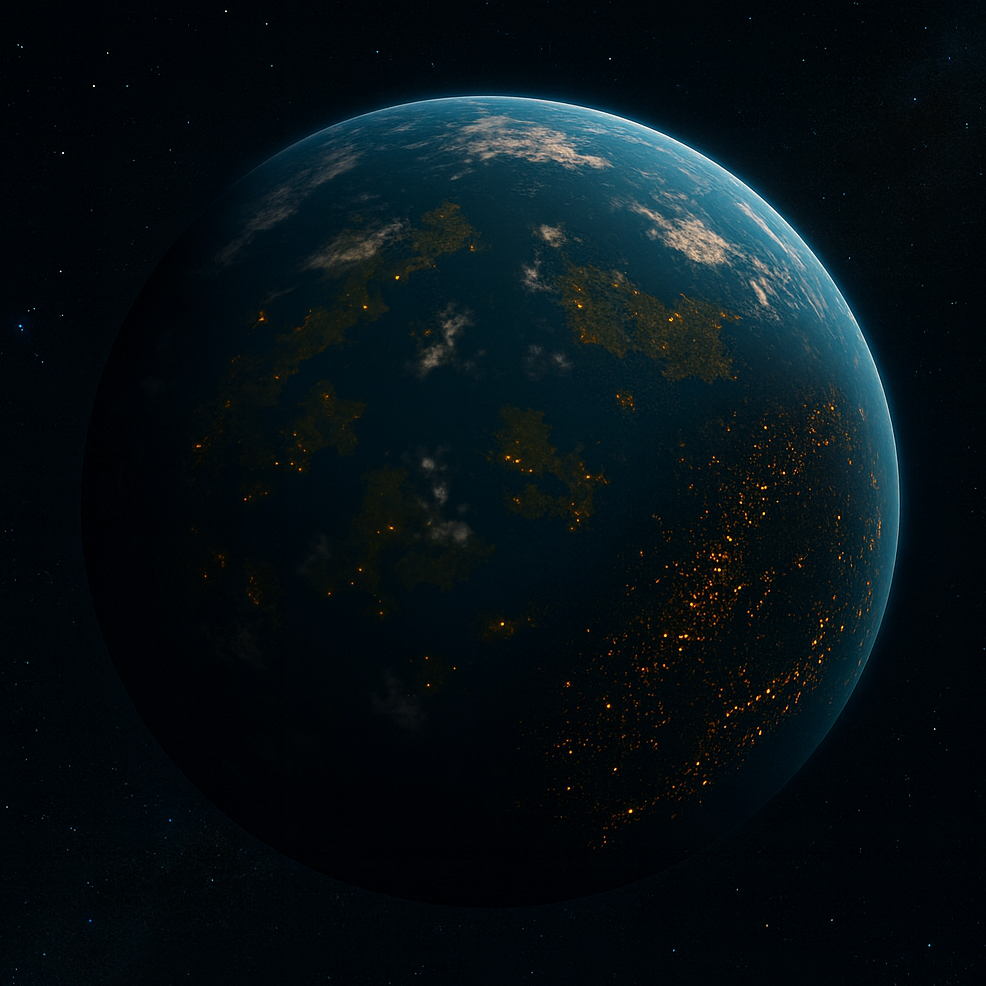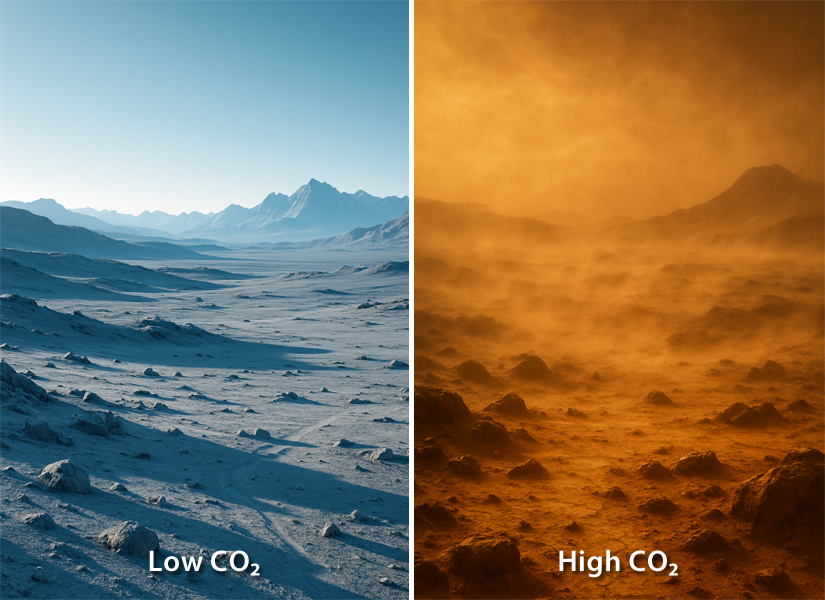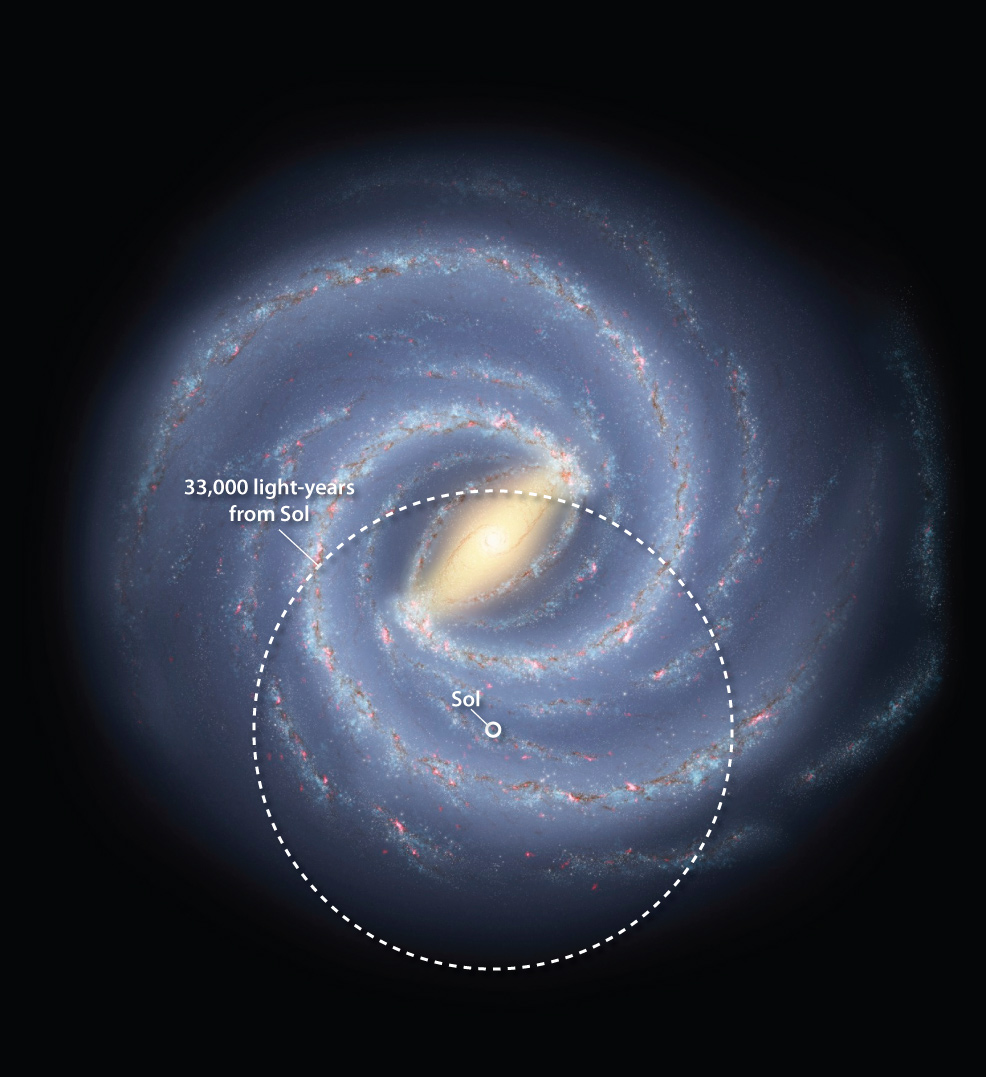
15th October 2025 Closest alien civilisation could be 33,000 light years away New modelling suggests that advanced life in the Milky Way galaxy is extremely rare – and that any surviving civilisations are likely to be far older than our own.
The nearest technological civilisation in our galaxy is probably at least 33,000 light years away, according to new research presented at a major astronomy conference in Finland. Dr Manuel Scherf and Professor Helmut Lammer of the Space Research Institute at the Austrian Academy of Sciences developed a model to estimate how long a planet can remain habitable for complex, intelligent life – and how this affects the chances of other civilisations existing at the same time as ours. Their calculations focus on two critical ingredients for a life-supporting world: a stable nitrogen–oxygen atmosphere and active plate tectonics. These processes work together to regulate a planet's levels of carbon dioxide (CO₂) – a gas that both sustains life and controls climate. Too little CO₂, and photosynthesis would grind to a halt. Too much, and a runaway greenhouse effect could make the surface uninhabitable. On Earth, plate tectonics help to keep this balance by cycling carbon between the atmosphere and the crust. But over geological timescales, CO₂ gradually becomes trapped in rocks, reducing the amount available to maintain photosynthesis. "At some point, enough carbon dioxide will be drawn from the atmosphere so that photosynthesis will stop working," explains Scherf. "For the Earth, that's expected to happen in about 200 million to roughly one billion years." Using their computer model, the researchers simulated how these processes might unfold on other Earth-like planets orbiting different types of stars. They found that a planet with around 10% CO₂ in its atmosphere – perhaps one that receives less heat from its star – could sustain a biosphere for around 4.2 billion years. By contrast, a planet with just 1% CO₂ would remain habitable for only about 3.1 billion years.
But a long-lived biosphere is only part of the story. To support higher forms of life – and eventually a technological civilisation – a planet must also have at least 18% oxygen. Complex animals require higher oxygen levels, and below this threshold, not enough free oxygen would be available for open-air combustion. Without fire, metalworking would be impossible, preventing the rise of any technological civilisation. Scherf and Lammer then compared these habitable lifetimes with how long it took intelligent life to arise on Earth – about 4.5 billion years – and with how long a civilisation might last once it appears. The longer a civilisation endures, the greater the chance that two or more can exist in the galaxy at the same time. So in other words, the odds of overlap depend not only on how often civilisations emerge, but on how long each survives before disappearing. A short-lived species would be easy to miss, whereas a civilisation that endures for millions of years is far more likely to coincide with others. The model suggests that for just one other civilisation to coexist with humanity, it would need to survive for at least 280,000 years. For ten to be present at once, the average lifetime of each would have to exceed 10 million years. Since the number of overlapping civilisations is likely to be small, the researchers estimate that the closest one is about 33,000 light years away – meaning a vast swathe of our galaxy is probably devoid of technologically advanced life.
Based on the results of their model, the research team concludes that if we do ever detect an extraterrestrial intelligence, it is almost certainly going to be much older than humanity. There is still considerable uncertainty, of course. Unknown factors may change the odds – such as the origin of life, the origin of photosynthesis, the origin of multicellular life, and the frequency with which intelligent life develops technology – but these cannot be quantified at present. "Although extraterrestrial intelligences might be rare, there is only one way to really find out... and that is by searching for it," explains Scherf. "If these searches find nothing, it makes our theory more likely, and if SETI does find something, then it will be one of the biggest scientific breakthroughs ever achieved as we would know that we are not alone in the Universe."
Comments »
If you enjoyed this article, please consider sharing it:
|
||||||









